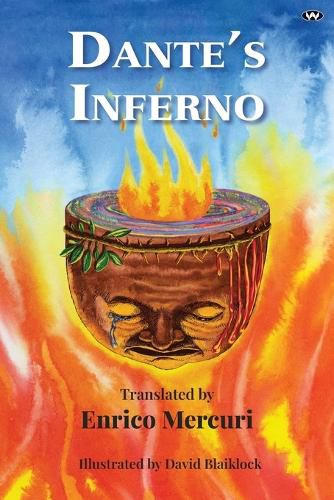Dante's Inferno by Dante Alighieri. Trans. by Enrico Mercuri. Illus. by David Blaiklock

Enrico Mercuri presents a new translation of the first part of Dante’s poem Divina Commedia (Divine Comedy) from the 14th century; Inferno (Hell) is followed by Purgatorio (Purgatory) and then Paradiso (Heaven). Inferno recounts the poet’s journey into the nine circles of the pit of Hell guided by the Roman poet Virgil. Each layer reveals different sins and the punishments that are accorded them, from the lamentations of those who died without faith, through all the deepening levels of lust, gluttony, greed, anger, heresy, violence, fraud and treachery. Each sin has its own torturous and macabre punishment, graphically depicted in the black and white drawings by David Blaiklock in this edition.
There are many resources, print and online, that interpret Dante's Inferno. What Mercuri has done is provide a translation of the original text using a form of English that is ‘contemporary, idiomatic, and fluid’. He comments that Dante himself chose to write in the vernacular of the common people rather than the Latin of the educated class. Mercuri determined that his translation should be equally readable by a contemporary audience. It maintains the structure of the original, the poem divided into 34 Cantos, and the verses in three-line stanzas, until the concluding line of each Canto. Most considerately he also provides a short summary at the beginning of each Canto that describes and explains the events that follow, an invaluable aid to the reader coming to Dante the first time.
Dante’s journey culminates in an encounter with Lucifer devouring the three worst sinners, Judas Escariot, Brutus and Cassius, traitors against those to whom they were most closely bound by special ties. From there Dante moves quickly out of Hell and ascends towards the world of light, towards the stars. It can only be hoped that the next stages in Dante’s spiritual journey, through Purgatory and then Heaven, could also receive such meticulous but accessible translation for those who would like to understand more of Dante’s celebrated work.
Themes: Spiritual journey, Hell, Sin, Punishment, Justice.
Helen Eddy